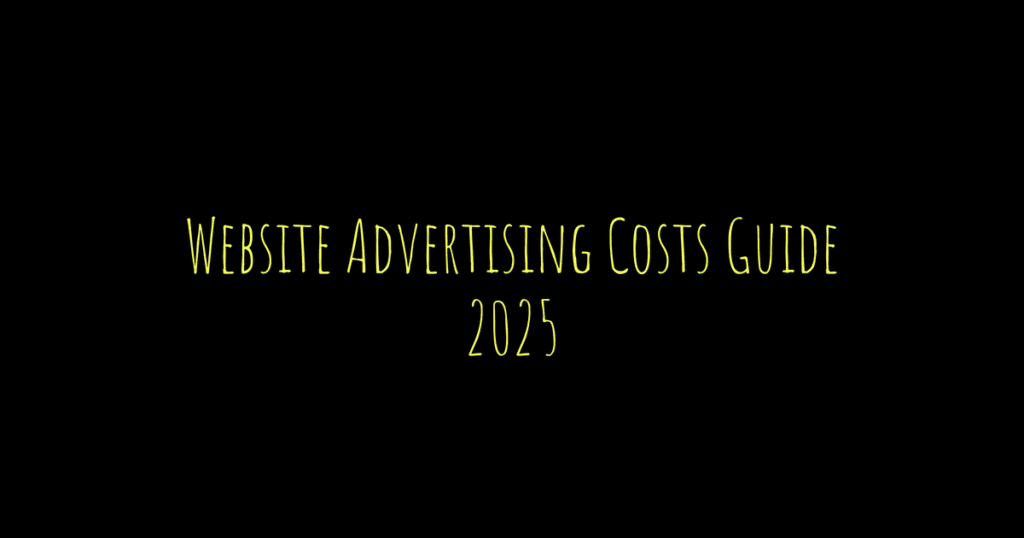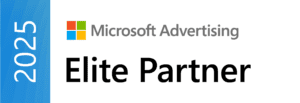Table of Contents
- Understanding Website Advertising Costs in 2025
- Different Types of Website Advertising
- Factors Influencing Advertising Costs
- Common Advertising Platforms and Their Costs
- Budgeting for Website Advertising
- Tracking and Measuring Advertising ROI
- Consulting with Marketing Professionals
- Where to Find Reliable Marketing Data
- Challenges in Gathering Advertising Cost Information
- Future Trends in Website Advertising Costs
- Frequently Asked Questions
Gathering specific details about website advertising costs for 2025 has proven challenging. I’ve looked into various sources, but unfortunately, many encountered errors or simply weren’t available. This left me without the comprehensive insights I hoped to find. It’s crucial to note that for the most accurate and up-to-date information on this topic, it might be best to consult reputable marketing websites or industry reports directly. Alternatively, talking with marketing professionals could provide valuable perspectives. As we move forward in this digital landscape, being well-informed becomes increasingly essential for businesses aiming to optimize their online advertising strategies effectively.
Understanding Website Advertising Costs in 2025

As we delve into website advertising costs for 2025, it’s crucial to recognize that these expenses can vary widely based on multiple factors. Businesses of all sizes are increasingly investing in online advertising, driven by the need for a strong digital presence. In 2025, expect costs to be influenced by the type of advertising chosen—be it pay-per-click (PPC), display ads, or social media promotions. For instance, PPC campaigns can range from a few cents to several dollars per click, depending on the competitiveness of the keywords.
Moreover, geographic targeting can play a significant role. Advertising in urban areas with high competition may come at a premium compared to rural regions. Additionally, the quality of the ad itself, including its design and relevance, can impact costs. Ads that are well-targeted and engaging tend to perform better, which can lead to lower costs per acquisition over time.
Another consideration is the platform used for advertising. For example, Google Ads and social media platforms like Facebook and Instagram have distinct pricing structures, which can affect overall budgets. In 2025, businesses might also need to account for emerging platforms that gain popularity, potentially altering where and how they allocate their advertising dollars. Finally, with advancements in AI and data analytics, advertisers may find new opportunities to optimize their spending, making it essential to stay informed and adaptable.
Different Types of Website Advertising
Website advertising comes in various forms, each tailored to meet different marketing goals and audience types. One major type is display advertising, which includes banners and ads shown on websites. These are visually appealing and can be targeted based on user behavior or demographics. Another popular option is search engine marketing (SEM), particularly through pay-per-click (PPC) ads on platforms like Google. This method allows advertisers to reach users actively searching for specific products or services, making it highly effective.
Social media advertising is also a key player, utilizing platforms like Facebook, Instagram, and Twitter to engage users where they spend much of their time. These ads can be highly targeted based on interests, behaviors, and location. Native advertising blends seamlessly with the content of the site, providing a less intrusive experience for users while still promoting a brand or product.
Lastly, affiliate marketing involves partnering with other websites to promote products, where affiliates earn a commission for each sale made through their referral. Each of these advertising types has unique strengths and can be used in combination to create a comprehensive marketing strategy.
Factors Influencing Advertising Costs

Several key factors can shape the landscape of advertising costs for websites in 2025. One primary aspect is the target audience. The more niche the audience, the higher the cost might be, as advertisers strive to reach specific demographics effectively. Additionally, the type of advertisement plays a significant role; for instance, display ads often have different pricing structures compared to pay-per-click (PPC) campaigns.
Competition is another crucial element. In markets with high competition, costs tend to escalate as businesses bid against each other for prime advertising space. Seasonal trends can also influence pricing. For example, during peak shopping seasons, advertisers may face increased rates due to heightened demand.
Moreover, the platform used for advertising can significantly affect costs. Well-known platforms like Google and Facebook have established pricing models that reflect their extensive reach and targeting capabilities. Lastly, the quality of the advertisement itself can impact costs; well-crafted, engaging ads may yield better results, allowing businesses to optimize their advertising spend over time.
- Type of advertising platform (e.g., social media, search engines)
- Target audience demographics and location
- Competition within the industry and niche
- Seasonal trends affecting ad performance and pricing
- Ad format and creative quality (e.g., video vs. text)
- Bid strategies and budget allocations
- Changes in algorithms affecting ad visibility and reach
Common Advertising Platforms and Their Costs
When exploring common advertising platforms, several options stand out for their effectiveness and varying costs. Google Ads is a major player, allowing businesses to bid on keywords, with costs typically ranging from $1 to $2 per click on average, though competitive industries can see much higher rates. Facebook Ads also offers robust targeting options, with costs averaging around $0.50 to $3 per click, depending on the audience and ad placement. Additionally, Instagram, which is part of the Facebook ecosystem, shares similar pricing structures. Display ads on platforms like the Google Display Network can be slightly cheaper, often costing around $0.10 to $0.30 per click, making them an attractive option for brand awareness campaigns. LinkedIn, suited for B2B marketing, tends to be pricier, with costs averaging $3 to $6 per click, reflecting its professional audience. Each platform has unique strengths, and choosing the right one often depends on your specific advertising goals and target demographics.
| Platform | Cost Range (Monthly) | Notes |
|---|---|---|
| Google Ads | $300 – $10,000 | Varies based on competition and keywords. |
| Facebook Ads | $200 – $10,000 | Costs depend on target audience and ad format. |
| Instagram Ads | $250 – $5,000 | Increasingly popular among younger demographics. |
| LinkedIn Ads | $500 – $15,000 | Ideal for B2B marketing efforts. |
| Twitter Ads | $200 – $10,000 | Cost varies based on engagement and reach. |
Budgeting for Website Advertising
Setting a budget for website advertising is crucial for any business looking to make an impact online. Start by assessing your overall marketing budget and determine what percentage can be allocated to digital advertising. A common recommendation is to spend about 5-10% of your total revenue on marketing, but this can vary based on your business goals and market conditions.
Next, consider the types of advertising that align with your objectives. For example, if you’re focusing on brand awareness, display ads might be a good fit, while pay-per-click (PPC) campaigns can drive immediate traffic. Each type of advertising comes with its own cost structure, so it’s essential to research and choose wisely.
Once you have a clear understanding of your goals and preferred advertising methods, break down your budget into specific campaigns. Allocate funds based on expected reach and effectiveness. For instance, if using Google Ads, you might set a daily budget and monitor performance to adjust as needed.
Finally, don’t forget to account for additional costs like creative development, landing page optimization, and analytics tools. These elements are vital for maximizing the effectiveness of your campaigns. Regularly review and adjust your budget based on performance, ensuring that you’re getting the most value from your advertising spend.
Tracking and Measuring Advertising ROI
Tracking and measuring the return on investment (ROI) for your website advertising is crucial for understanding the effectiveness of your campaigns. The first step is to set clear goals for what you want your advertising to achieve, whether it’s increasing sales, generating leads, or building brand awareness. Tools like Google Analytics can help you monitor traffic sources, conversion rates, and user behavior on your website.
For instance, if you run a pay-per-click (PPC) campaign, you can track how many clicks lead to actual sales. This will help you calculate your ROI by comparing the cost of your ads to the revenue generated. A simple formula to calculate ROI is:
[ \text{ROI} = \frac{\text{Net Profit}}{\text{Cost of Investment}} \times 100 ]
If you spent $500 on ads and made $1,500 in profit, your ROI would be 200%.
You should also consider using UTM parameters to track the effectiveness of specific campaigns or ads. This way, you can see which ads are performing well and which ones aren’t, allowing you to optimize your advertising strategy accordingly. Regularly reviewing these metrics will help you adjust your budget and refine your targeting to ensure that you’re getting the most out of your advertising spend.
Consulting with Marketing Professionals
When navigating the complex world of website advertising costs, consulting with marketing professionals can be invaluable. These experts bring a wealth of experience and up-to-date knowledge about the latest trends and strategies. They can help you understand the nuances of pricing models, such as cost-per-click (CPC) or cost-per-impression (CPM), and how these can fluctuate based on your target audience and advertising goals.
For instance, a marketing consultant might analyze your specific industry to provide tailored suggestions. If you run an e-commerce site, they may recommend focusing on platforms like Google Ads or Facebook Ads, which tend to yield higher returns for retail businesses. Conversely, if your service is B2B, they might guide you toward LinkedIn advertising, where the audience is more professional and engaged.
Moreover, professionals can assist in budget setting, ensuring that your spending aligns with your overall business objectives. They can also help you monitor and adjust your campaigns in real time, maximizing your investment. In essence, leveraging the insights of marketing professionals not only clarifies the costs involved but can significantly enhance your advertising effectiveness.
Where to Find Reliable Marketing Data
Finding reliable marketing data is crucial for understanding website advertising costs. Start by exploring established marketing websites such as HubSpot, Moz, or Neil Patel. These platforms often publish insightful articles and reports based on recent studies and surveys. Additionally, industry reports from firms like eMarketer or Statista can provide valuable statistics and trends. If you prefer real-time data, consider tools like Google Trends or SEMrush, which can help you analyze current market conditions. Networking with marketing professionals through platforms like LinkedIn can also yield firsthand insights and recommendations on trustworthy data sources.
Challenges in Gathering Advertising Cost Information
Gathering accurate information on website advertising costs can be quite tricky. Many marketers often face obstacles when trying to collect data from reliable sources. For instance, numerous authoritative websites might have outdated or incomplete information, leading to confusion. In my recent attempts to compile comprehensive insights for 2025, I encountered several errors and pages that simply would not load. This kind of inconsistency can make it hard to form a clear understanding of current advertising landscapes. Without access to real-time data, businesses might struggle to set effective budgets or strategies. Therefore, it is crucial for marketers to seek out reputable marketing websites or connect with professionals who have up-to-date insights. Establishing a network of knowledgeable contacts can also help navigate through the noise and find the most relevant information.
Future Trends in Website Advertising Costs
As we look toward 2025, several trends are shaping the landscape of website advertising costs. One significant trend is the increasing reliance on artificial intelligence and machine learning. These technologies are streamlining ad targeting and optimization, making it easier for advertisers to reach their desired audiences. For instance, AI-driven platforms can analyze user behavior in real-time and adjust ad spending dynamically, potentially leading to more effective campaigns at lower costs.
Another trend is the rise of video content. With more users engaging with video ads, businesses may find that investing in video advertising yields higher returns. This shift could result in increased competition for video ad space, driving costs up. For example, brands might allocate a larger portion of their budgets to platforms like YouTube or social media sites that prioritize video content.
Additionally, privacy regulations are becoming stricter, which could impact how advertisers gather data and target consumers. This may lead to higher costs as companies invest in compliance measures and alternative advertising strategies. Brands might have to adapt their approaches, relying less on cookies and more on contextual advertising, which could change the pricing dynamics in the industry.
Finally, the increasing importance of sustainability is influencing advertising costs. Consumers are becoming more conscious of the brands they support, prompting companies to invest in eco-friendly advertising practices. This could lead to a premium on sustainable advertising options, affecting overall costs. Advertisers will need to balance their budgets while aligning with consumer values, which could reshape the financial landscape for website advertising in the coming years.
Frequently Asked Questions
1. What types of website advertising are available in 2025?
In 2025, you can find various types of website advertising, like pay-per-click ads, banner ads, social media promotions, sponsored content, and affiliate marketing. Each type has its own benefits and can be tailored to different audiences.
2. How does website traffic impact advertising costs?
Website traffic plays a big role in advertising costs. Generally, the more visitors a site attracts, the higher the potential advertising rates. Advertisers often pay more for sites with high traffic since they can reach a larger audience effectively.
3. What factors should I consider when choosing an advertising platform?
When selecting an advertising platform, think about your target audience, budget, advertising goals, and the type of content you’ll promote. Also, consider how user-friendly the platform is and the potential reach you could have.
4. How can I measure the success of my website advertising?
You can measure advertising success through metrics like click-through rates, conversion rates, and the overall return on investment (ROI). Tracking tools and analytics can help you see how well your ads perform and what adjustments may be needed.
5. What is the role of SEO in website advertising?
SEO, or search engine optimization, is important for website advertising because it helps your site rank higher in search results. A well-optimized site will attract more visitors, making your advertising efforts more effective and increasing your overall visibility.
TL;DR This blog post provides an overview of website advertising costs in 2025, including types of advertising, factors affecting costs, common platforms, budgeting tips, and ROI measurement. It highlights the challenges of gathering accurate cost information and suggests seeking advice from marketing professionals and reputable sources for updated data.



